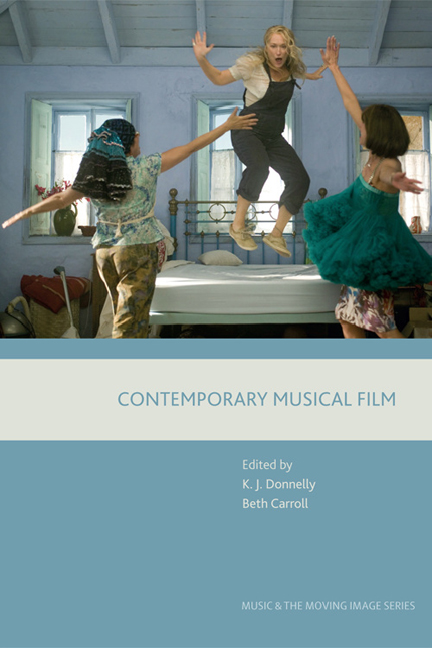Introduction: Reimagining the Contemporary Musical in the Twenty-first Century
Published online by Cambridge University Press: 03 January 2018
Summary
Film musicals are one of the key places where music and film join most clearly. They are the antecedent of modern digital audio-visual culture, where sound and image combine, and film aesthetics and music aesthetics merge into something different and more than the sum of their parts. Sonic excess becomes visual spectacle, both vying for ascendency. The film musical is a site of tension: between innovation and tradition, between sound and image, musical number and narrative, and between professionalism and amateurism. It is the continuous discord and synthesis that these tensions raise that forces the musical to never be in stasis, but rather always in a constant state of transition. It is the extent and form of these transitions that this collection focuses upon.
Although one of the staples of classical Hollywood, the film musical became more intermittent in the post-studio era. Indeed, in the last decades of the twentieth century it had become almost a rarity, the tent-pole musical productions of the 1960s, such as Star! (Robert Wise, 1968) and Hello Dolly! (Gene Kelly, 1969), heralding an era of lower budget caution and ‘independent’ production. However, in recent years there has been a remarkable resurgence in the success of film musicals. This edited collection explores the breadth and diversity of recent film musicals, celebrating their energy and diversity, and addressing the genre traditions and innovations, looking to the essential relationship between film and live entertainment, innovation and conservatism.
While at times the film musical genre might have seemed over, merely a historical curio, in the last couple of decades it has re-emerged with a renewed vigour. Although the ‘classical musical’ of Hollywood's heyday – the big white sets, full orchestral scores, dancing stars and elaborate production numbers – might seem long gone, its modes are still very much alive, and its sibling on the stage (embodied by Broadway and London's West End) remains tremendously successful. The old mantra that the musical is dead has long taken on muted tones and the form's past popularity discussed with diminishing reverence excepting by those who have remained stalwart to the genre. Yet, it has never been proven true.
- Type
- Chapter
- Information
- Contemporary Musical Film , pp. 1 - 10Publisher: Edinburgh University PressPrint publication year: 2017

